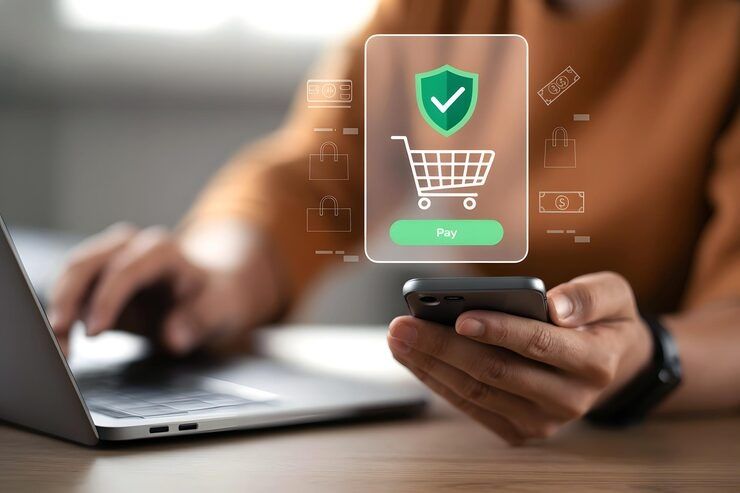Explore Secure Practices: A Comprehensive Guide to Navigating Online Marketplaces Safely
In today’s digital economy, online marketplaces have revolutionized the way people buy, sell, and trade goods across the world. From individual sellers to established businesses, these platforms offer convenience, global reach, and competitive pricing. However, this rapid growth also brings new cybersecurity challenges and risks for both consumers and merchants. Understanding how to navigate these spaces safely is essential for protecting your data, identity, and finances.
Understanding Online Marketplaces in the Digital Age
Online marketplaces such as Amazon, eBay, Etsy, Alibaba, and Facebook Marketplace connect millions of users daily. They function as intermediaries between buyers and sellers, ensuring transactions occur smoothly. However, behind their convenience lies a complex system that requires trust, transparency, and accountability.
A secure marketplace must have encrypted payment systems, verified seller programs, fraud detection mechanisms, and clear policies on returns and data protection. As users engage in these platforms, knowing how to evaluate security signals—such as HTTPS certificates, verified listings, and customer reviews—is critical to avoiding scams or data breaches.
Why Secure Practices Matter in Online Marketplaces
With online fraud projected to exceed $12 billion globally by 2025, digital safety has never been more important. Cybercriminals exploit weak passwords, phishing emails, fake listings, and unverified payment gateways to steal sensitive data.
For consumers, the consequences include identity theft, unauthorized purchases, and financial loss. For sellers, risks range from account hacking to chargeback fraud and counterfeit product listings. Practicing digital awareness ensures that transactions remain secure, transparent, and trustworthy—preserving the integrity of the marketplace ecosystem.
By prioritizing security measures like two-factor authentication (2FA) and regular password updates, both buyers and sellers can significantly reduce their exposure to potential cyber threats.
Recent Developments in Online Marketplace Security (2024–2025)
The past year has seen major advancements in cybersecurity protocols and AI-based fraud detection across global e-commerce platforms. Notable developments include:
| Trend | Description | Impact on Users |
|---|---|---|
| AI-driven Fraud Detection (2024) | Platforms like Amazon and Alibaba have integrated AI to identify suspicious patterns in transactions and fake reviews. | Reduces scams and improves buyer confidence. |
| Decentralized Marketplaces (2025) | The rise of blockchain-based marketplaces offering transparent, immutable records of transactions. | Enhances trust through verifiable digital ledgers. |
| Enhanced Data Privacy Regulations | Implementation of GDPR-like policies in more regions, including APAC and the Middle East. | Gives users greater control over personal data. |
| Biometric Authentication | Integration of fingerprint and facial recognition for payment verifications. | Strengthens user identity protection and reduces account theft. |
These trends reflect a broader shift toward zero-trust security frameworks and privacy-first ecosystems—designed to protect both consumer and business data in an increasingly digital world.
Key Regulations and Legal Frameworks Affecting Online Marketplaces
Governments worldwide are tightening regulations to make digital commerce safer and more accountable.
-
General Data Protection Regulation (GDPR – EU): Protects user privacy by controlling how personal data is collected and processed.
-
Consumer Protection Act (U.S. and EU Variants): Ensures fair trading practices and safeguards against deceptive listings or false advertising.
-
Digital Services Act (EU – 2024 Update): Requires marketplaces to remove illegal content, counterfeit goods, and ensure seller verification.
-
California Consumer Privacy Act (CCPA): Gives consumers the right to know what data is being collected and to request its deletion.
-
Cybersecurity Maturity Model (Asia-Pacific, 2025 Expansion): Encourages platforms to adopt strict encryption, authentication, and auditing measures.
Understanding these frameworks empowers users to assert their rights, ensuring that personal and financial information is handled responsibly.
Best Practices for Navigating Online Marketplaces Safely
To minimize risk while shopping or selling online, adopting a proactive approach is crucial. Here are key practices to follow:
For Buyers
-
Verify the Seller: Always check for verified seller badges and read recent reviews.
-
Use Secure Payment Methods: Prefer official marketplace payment gateways or escrow systems. Avoid direct bank transfers.
-
Inspect Product Details: Review product descriptions carefully to avoid counterfeit or misleading listings.
-
Enable 2FA: Use two-factor authentication to protect your account from unauthorized access.
-
Monitor Transactions: Regularly review purchase history and report any suspicious activity immediately.
For Sellers
-
Protect Account Credentials: Use strong, unique passwords and update them periodically.
-
Monitor Customer Activity: Keep an eye on unusual order patterns that might indicate fraud.
-
Use Trusted Logistics Partners: Ensure delivery tracking and verified shipping documentation.
-
Stay Compliant with Data Regulations: Handle customer data responsibly and follow regional privacy laws.
-
Respond Transparently to Disputes: Effective communication helps maintain customer trust and reputation.
Tools and Resources for Secure Online Transactions
Several trusted tools and platforms can enhance your digital safety while engaging in online marketplaces.
| Tool/Platform | Purpose | Key Feature |
|---|---|---|
| Google Safe Browsing | Detects unsafe websites and phishing attempts. | Real-time alerts and URL scanning. |
| Have I Been Pwned | Checks if your email or credentials have been compromised. | Data breach database lookup. |
| Norton Password Manager | Stores and generates secure passwords. | Cross-device synchronization and auto-fill protection. |
| PayPal Security Center | Educates users on safe online payment habits. | Secure payment processing with buyer protection. |
| Better Business Bureau (BBB) | Verifies business legitimacy before purchase. | Customer reviews and scam alerts. |
Using these tools regularly helps ensure safer browsing, more secure transactions, and informed decision-making.
Frequently Asked Questions
What is the safest way to pay on an online marketplace?
The safest options are verified payment systems such as PayPal, Google Pay, or marketplace escrow systems, which offer buyer protection and dispute resolution.
How can I identify a fake listing or scam seller?
Look for inconsistencies in product details, extremely low prices, or poor-quality images. Always verify seller ratings and reviews before proceeding.
Are online marketplaces required to verify sellers?
Yes, under laws like the Digital Services Act (EU), marketplaces must verify seller identities and remove fraudulent listings when reported.
Can my personal data be misused after a purchase?
If you provide data outside the marketplace or use unsecured payment links, it can be at risk. Stick to official channels and never share sensitive information directly.
What should I do if I fall victim to a scam?
Immediately report the issue to the platform’s support team, contact your payment provider, and file a report with local consumer protection authorities.
Conclusion
As global commerce continues to expand online, digital safety and responsible marketplace practices are no longer optional—they are essential. By staying informed, verifying sources, and using secure tools, both buyers and sellers can confidently participate in online marketplaces.
The key to safe navigation lies in awareness, vigilance, and adherence to global data protection standards. In doing so, we not only protect our personal information but also contribute to a safer and more trustworthy digital marketplace for everyone.







